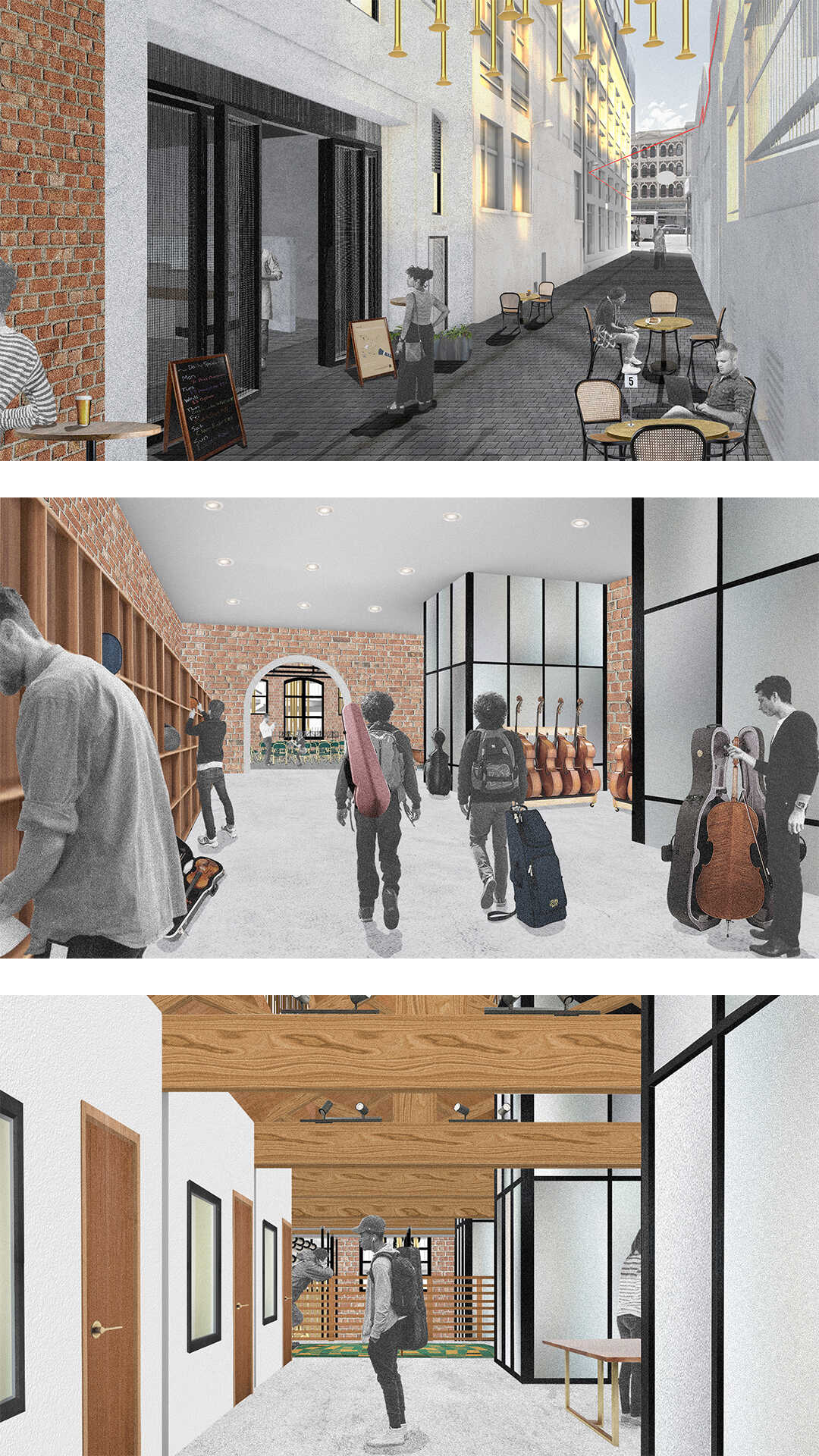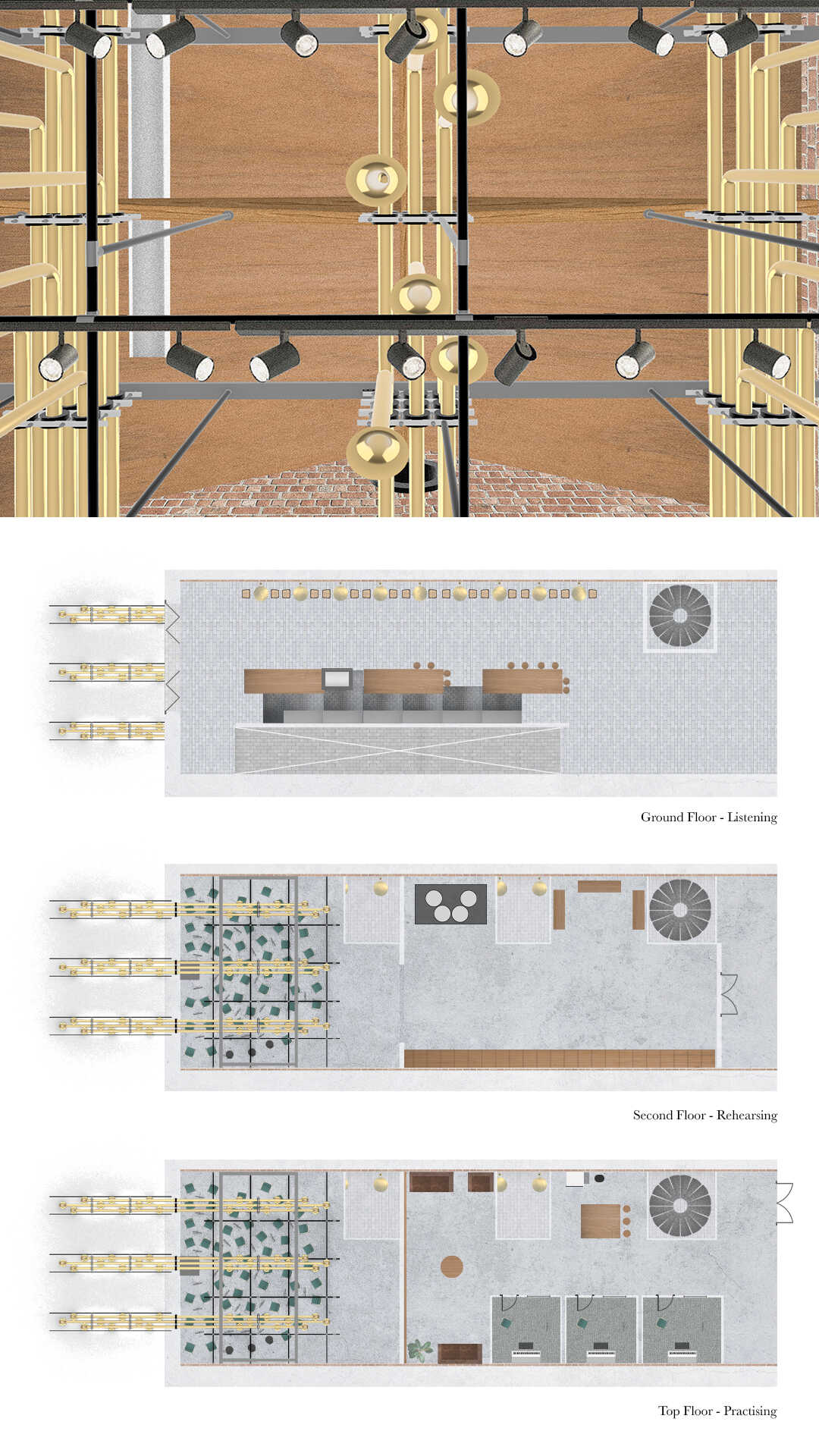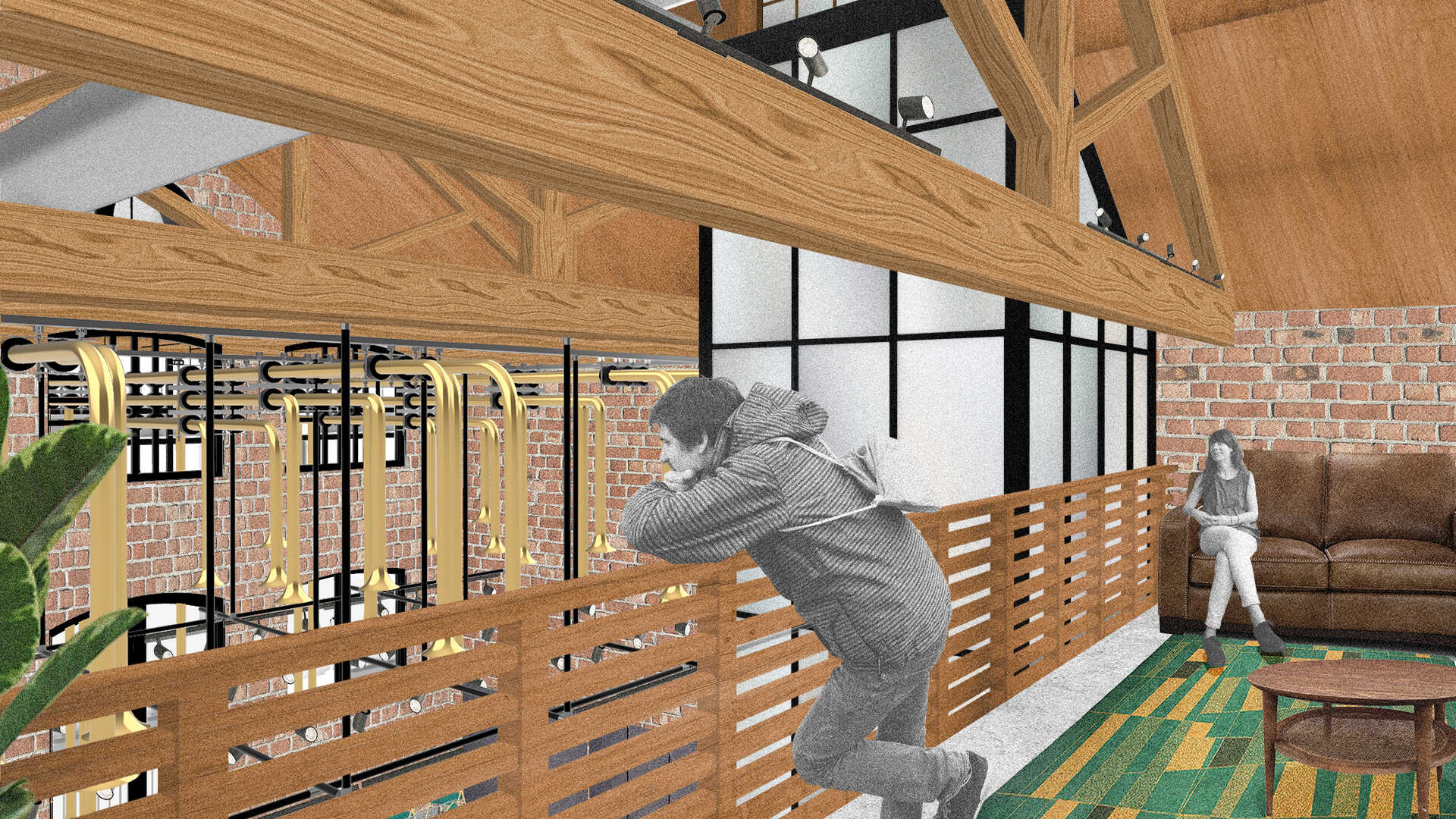

Hear with your eyes, see with your ears.
Located within Tāmaki Makaurau’s city centre, the performance and installation-based intervention can be distinguished by ear within the Fort Lane precinct. A network of brass pipes creep out from the floors above Imperial Lane, each pipe beginning and ending with a bell-shaped opening, and creating a threshold between the music makers and the music indulgers as passersby are overcast with the sounds of an orchestra live in rehearsal and in contrast with the city’s cacophony. Entitled ‘The Phantom of The Orchestra’, the ensemble is obscured from onlookers to allow the full embodiment of sound to dominate one’s senses.
By reviving the public life of Fort Lane, my design preserves the existing material fabric of the Imperial Buildings in homage to the history of the Fort Lane precinct and to elevate the spatial qualities present.
In the history of cinema, silent films had live orchestral or piano accompaniment to aid visual projections. Music itself was depicted as a metamorphic character that adapted to the different moods and scenes to emphasise the film’s storyline. The defining factor of my design is sound and the capacity it has to inhabit not only our physical surroundings but how it impacts our internal being, as the power of sound is much greater than what meets the eye.
My design features three phases of experience:
- Listening - Ground Floor (Imperial Lane)
Open access for the public to pass through or grab a bite while tuning into the rehearsals. - Rehearsing and Conducting - Second Floor
A large rehearsal room and storage area for ensemble groups to inhabit and create music in unison with others. - Practising - Top Floor
Private areas for the musicians to perfect their own craft and to relax.
This space of permanence provides musicians and city dwellers; the private and the public; music creators and music listeners with a temporary retreat from the hustling city. In designing an alternative urban soundscape for city dwellers to tune into, in the same manner as buskers who enrich the public with their music, it aims to contribute a different perspective to the city at large through listening with their eyes and looking with their ears.



